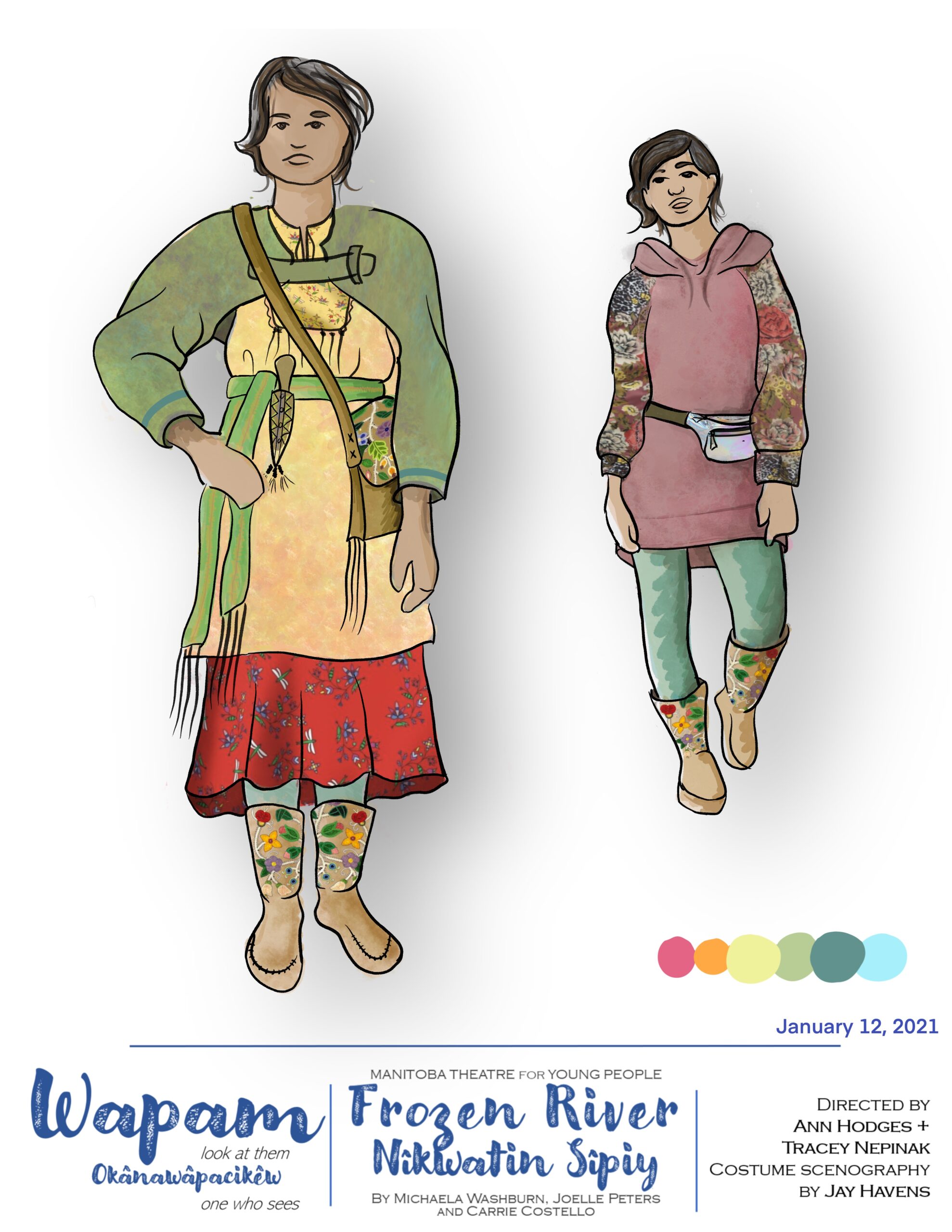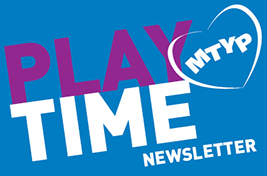
NATURAL LANDSCAPES INSPIRE DESIGNS IN FROZEN RIVER
Jay Havens is a multi-disciplinary artist based in Vancouver, British Columbia. MTYP is delighted to have Jay on our Frozen River team as costume designer. Jay took some time out of his busy schedule to answer a few questions we had about his process, theatre for young audiences and the natural landscapes of each character, and how they inspire his designs.
Can you talk a bit about your creative process? What inspires you and your work?
Every project is a little different, so the process of creating it is never quite the same. With this show, since we’re working remotely, it’s an entirely different process than what might happen if we could get into a space together. It has been very inspiring to work this way however, because we’re all trying our best to make it work. It’s always so exciting to see a show come to life no matter what. After having drawn the characters on the page and done all this work and research with the directors during pre production, it’s the coolest thing to see the actors in fittings bringing the sketches to life. It’s amazing every single time.
Is this your first time working in TYA? If so, how is it different from working in theatre for adults?
I have worked in children’s theatre for over fifteen years. I used to do some designing for Carousel Theatre for Young People and I’ve worked for Axis Theatre Company, both in Vancouver, for many years. A few times a year I also make workshops or paint murals with school age students both in British Columbia and Ontario. I don’t think working in children’s theatre is very different from designing for adults other than you might have some different colour choices. Whether we are making theatre for children or for adults, it’s a serious business. It might be lots of fun and at times it even feels like play, but that doesn’t mean we don’t take the work that needs to be done seriously.

Does the look of each character take form as you are reading a script? Or does the story need to sit with you?
I don’t focus too much on characters or the look of anything when I read the script the very first time. Mostly I take in the dialogue and plot lines, and don’t typically make sketches until I perform some research. But then again, there are details found in the script that I make notes of fairly early in the process too, so I think my answer is just yes, on both accounts.
I love how each costume design reflects the natural colours of where the characters are from. Was this something you had in mind prior to reading the script or did the script inspire this idea?
This is a good example to demonstrate what I couldn’t in my previous answer. The playwrights of Frozen River gave a lot of clues in the text about each character’s needs for their costumes. The theme of living with the land and the loss of homeland, is woven throughout the play. I see those things in the text and using some research I spin those clues into something that can be visual. Wapam’s colour scheme becomes the colour of Manitoba wildflowers like the prairie lily, lady slippers or purple clover. Eilidh is the colour of misty highland mountain flowers like heather, lavender and thistle.
You used traditional materials in your designs for Frozen River. Is this something you try to do often when you create?
Actually, there aren’t many traditional materials in these costumes, except that we use leather for both of the character’s footwear and Moon has a tiny bit of horse hair on her robe. Certainly the outfits are informed by traditional garments of the time, but young audiences need to see themselves reflected in these characters even when they are living in the 1840’s. Things need to look contemporary like the colours for instance, and everything was made in 2020 and is an MTYP original design. We designed the historical garments with zippers and use polyester fabrics and whatever the requirements of the production needed. Some items were made by contemporary Indigenous artists like Amy McPherson, who designed original work on Wapam’s medicine bag and tunic. Then Cole Redhorse Jacobson designed the fabrics we are using for her skirt. There are also a number of skilled fibre artists dying Moon’s pants, finger weaving belts and making moccasins-all very valuable traditional skills.
What does the story of Frozen River mean to you? How do you feel the costume designs support the story?
I hope the costumes allow the actors to embody these characters more fully. Frozen River is an especially important story right now during a climate emergency. It demonstrates how we can learn from our Indigenous neighbours if we want to listen. The reason Indigenous folks have been surviving in places for so long is because of our ecological knowledge and ability to live with the land.

